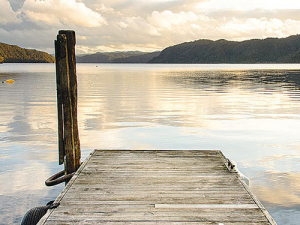Fonterra shareholders watch performance after sale
Fonterra shareholders say they will be keeping an eye on their co-operative's performance after the sale of its consumer businesses.
 Chris Sutton says local farmers have worked together since the early 2000s to lead in protecting local lakes.
Chris Sutton says local farmers have worked together since the early 2000s to lead in protecting local lakes.
Fonterra is backing a farmer-led project to protect water quality in Bay of Plenty lakes.
Farmers from the Rerewhakaaitu community haved worked with Bay of Plenty Regional Council, Fonterra, Beef + Lamb New Zealand, AgFirst and PerrinAg to develop a farm-specific nutrient profile and produce 48 tailored farm environment plans (FEP).
The FEPs will help farmers minimise nitrogen and phosphorus losses to waterways.
This 18-month project involved farmers in the catchments of Lakes Rotomahana, Okareka, Okaro, Rotokakahi, Rerewhakaaitu and Tarawera, plus some adjoining farms in the Rangitaiki and Waikato River catchments.
Project Rerewhakaaitu is the farmer group at the centre of the project.
Andrew Kempson from Fonterra’s sustainable dairying programme, says they were keen to trial their new farm plan system — Tiaki — in a region with no onfarm nutrient limits to help farmers stay ahead of the game voluntarily.
“Tiaki farm plans also consider sediment and bacterial losses and how to reduce them.
“Fonterra staff have worked with 32 dairy farmers, covering a bit over 5000 hectares. Collectively there were 1060 onfarm actions identified in the new Tiaki farm plans in the Tarawera lakes catchments. We were also able to compare nutrient losses between land use, soil types and the different catchments.”
Project Rerewhakaaitu chairman Chris Sutton says local farmers have worked together since the early 2000s to lead in protecting local lakes.
“This latest project helps us work alongside industry and the regional council so each farmer gets their own customised farm environment plan with an Overseer assessment of their ‘nutrient footprint’,” he says.
“We know nutrient rules might affect our farmers one day, so it’s best we understand our footprint and have a set of actions farmers can implement on-farm. We also agreed to share nutrient loss data with the regional council.”
Horticulture New Zealand (HortNZ) says a new report projects strong export growth for New Zealand's horticulture sector highlights the industry's increasing contribution to the national economy.
Fonterra shareholders say they will be keeping an eye on their co-operative's performance after the sale of its consumer businesses.
T&G Global says its 2025 New Zealand apple season has delivered higher returns for growers, reflecting strong global consumer demand and pricing across its Envy and Jazz apple brands.
New Zealand's primary sector is set to reach a record $62 billion in food and fibre exports next year.
A new levying body, currently with the working title of NZWool, has been proposed to secure the future of New Zealand's strong wool sector.
The most talked about, economically transformational pieces of legislation in a generation have finally begun their journey into the statute books.
President Donald Trump’s decision to impose tariffs on imports into the US is doing good things for global trade, according…
Seen a giant cheese roll rolling along Southland’s roads?